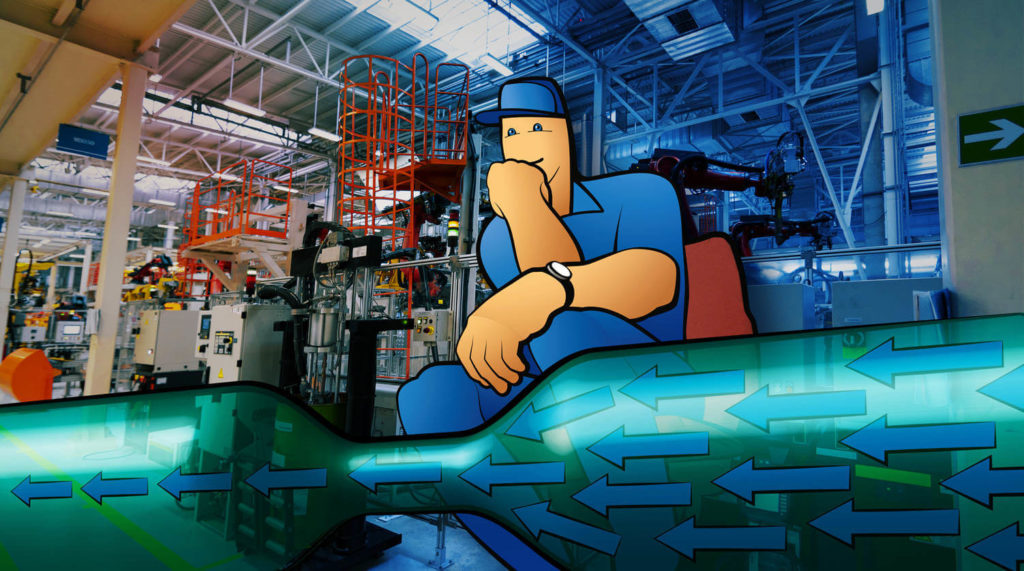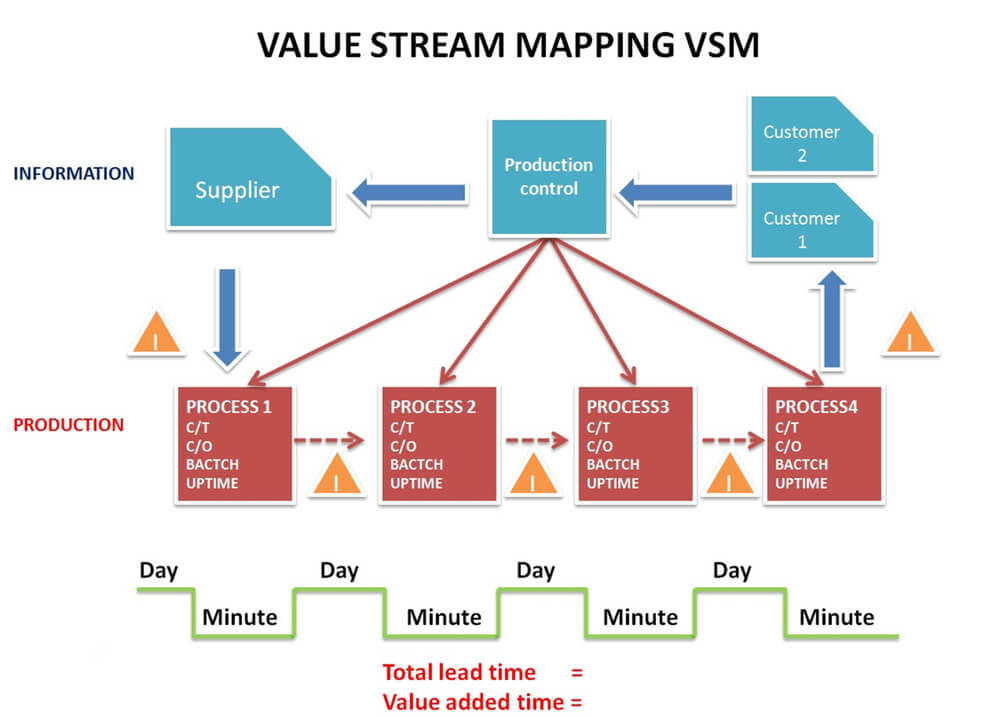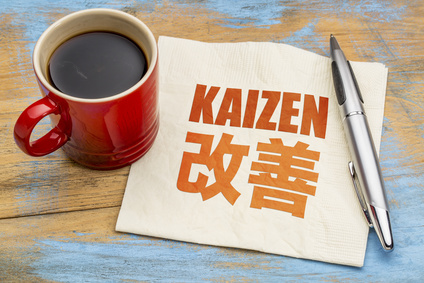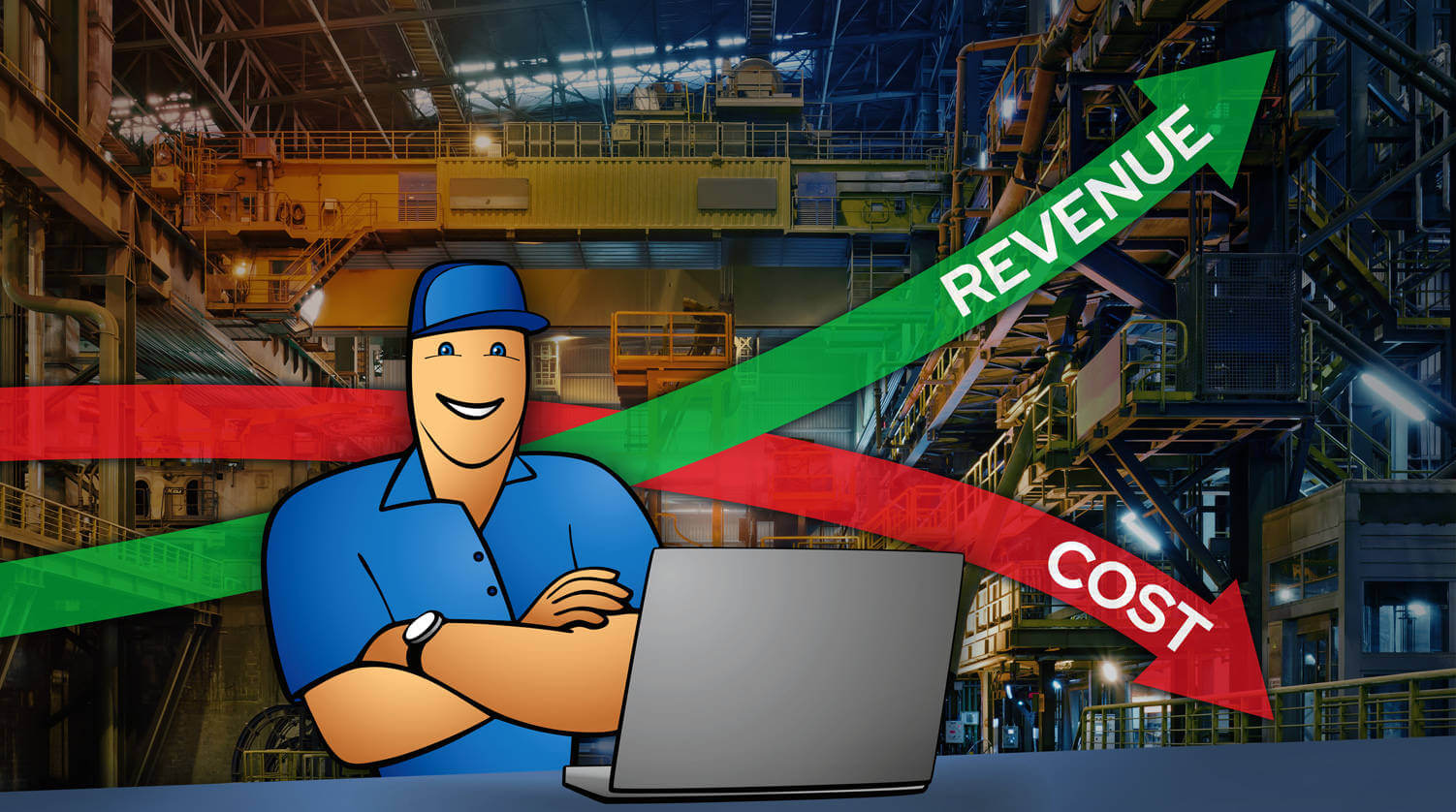How to Eliminate Bottlenecks in Manufacturing?
Manufacturing bottlenecks are points in the production process that are constrained by inefficiency. Finding and eliminating bottlenecks allows you to use more of your production capacity, minimize WIP inventory, reduce lead times, improve quality, and increase the overall efficiency of your manufacturing business.

You can also listen to this article:
What is a bottleneck in manufacturing?
A manufacturing bottleneck is a point in the production process where the continuous flow of goods is interrupted, causing a halt or a significant slowdown in production. The term “bottleneck” refers to the narrowest part of a bottle, where the volume of liquid passing through the vessel is reduced and the flow slows down.
A bottleneck can occur at any point in the manufacturing process, including design, production, assembly, quality control, or shipping. It may be caused by various factors, such as a lack of resources, equipment breakdown, low worker skill level, or insufficient training. By causing downtime, bottlenecks can negatively impact production efficiency, delay delivery times, increase costs, cause longer lead times, and affect customer satisfaction.
On the other hand, eliminating bottlenecks allows you to use your full capacity, minimize WIP inventory, reduce lead times, improve quality, and raise the overall efficiency and profitability of your business. Therefore, identifying and resolving bottlenecks is essential in any manufacturing company.
Short-term vs. long-term bottlenecks in manufacturing
Of course, no company is ever working at 100% capacity utilization. Inefficiencies are present in every manufacturing process, but it is necessary to distinguish between small bumps and bigger, systemic issues that affect the workflow continuously over a long period. Bottlenecks are therefore typically divided into short-term and long-term bottlenecks, relative to their cause.
Short-term bottlenecks are caused by temporary issues or unexpected events that correct themselves without your interference. These may include:
- Occasional machinery breakdowns
- Machinery reconfiguration
- Worker absence
- Power outage
- Isolated cases of late material deliveries
Long-term bottlenecks, on the other hand, are caused by issues that are ingrained within the supply chain and cause recurring problems. These may include:
- Production capacity unable to meet demand
- Lack of training
- No standardization of processes
- No automation of processes
- Constant material shortages
- Ineffective task assignment
- Lack of traceability
- Slow sales process
- Frequently late material deliveries
- Consistent machinery breakdowns
Naturally, systemic issues are much harder to detect and resolve than, for example, finding a temporary worker to fill in an absence. That is why in this article we will focus on identifying and eliminating long-term bottlenecks in your manufacturing workflow.
How to identify manufacturing bottlenecks?
There are many methods and methodologies that seek to provide manufacturers with valid approaches for identifying and eliminating bottlenecks in their supply chain. These vary from simple tricks to highly complex frameworks employing advanced analytics. Let’s take a look at some of them.
Bottleneck detection
In order to resolve a bottleneck, first we have to find it. Here are some good ways to start your bottleneck analysis and find out where the bottleneck is:
- Ask the shop floor staff. This may sound obvious but many managers still undervalue the opinion of production line workers. These are the people that are the most intimately acquainted with what goes on in the shop and often they don’t need performance metrics and analysis to tell you where the process bottlenecks are. Their input also adds context to the search for the root cause.
- Utilization method. A golden rule is that the workstation with the highest utilization rate is the bottlenecking point. Workstations with lower utilization rates are evidently capable of processing larger volumes while the one with the highest utilization often works at the slowest pace. This method has its disadvantages, though, as machine utilization rates can be very similar and as the utilization rate is calculated over a period of time, it only detects the average bottleneck as opposed to the one at any given time. In place of the utilization rate, you can also measure the cycle times of your workstations to see which of them processes goods the longest.
- Queue length method. Similar to the utilization method, queue length analysis takes a look at which machines or workstations have the longest backlog. A longer queue means that the workstation takes a longer time to process individual batches or units than the others. The queue length method also has its disadvantages, for some production lines have limited or no buffer times, meaning that there are no queues. That does not mean, however, that there cannot be bottlenecks. This method could also lead you to an incorrect result as batch sizes vary between machines.
- Throughput. Similar to the previous ones, the throughput method takes a look at the output of each workstation. If a machine is processing fewer units than the others during a set period, it is likely to be a bottleneck.
- Wait times. The wait time method uses a different workstation to identify the bottlenecking one. It looks at the wait times of the workstations to see which of them is idle the most. Idling most often means that there is a bottleneck in the preceding part of the production line.
There are also many other bottleneck detection methods that employ a higher degree of analysis and computation, such as the shifting bottleneck detection method, which is used to detect both average and momentary bottlenecks. The method centers around measuring the duration a machine is active without interruption and determining the bottleneck based on this.
Bottleneck root cause analysis
When we have detected where the bottleneck is, the next step is to determine its root cause. Let’s take a look at some of the root cause analysis methods:
- The Five Whys. The Five Whys is a universal problem-solving technique based on asking “why” until the root cause is clear.
Let’s say that a circuit board soldering workstation is working at maximum capacity but processing fewer quality units than the others. Why? Because the workstation produces many defective units in comparison to the other ones. Why? Because the soldering iron is damaging the circuit board. Why? Because the soldering iron gets too hot. Why? Because it’s not calibrated.
As you can see, the Five Whys method does not necessarily require you to ask “why” exactly five times, you can do it as few or as many times as long as you reach the core issue.
- Statistical process control (SPC). SPC is a statistical tool that can help monitor and control a process to identify potential bottlenecks and other issues. By using statistical analysis to monitor key process variables and control limits, SPC can help identify changes in the process that may be contributing to a bottleneck.
- The cause and effect or fishbone diagram. This is a visual tool that can help identify the root causes of a problem or bottleneck. The diagram is structured like a fishbone, with the main problem or bottleneck at the head of the fish and the potential root causes listed as “bones.” By brainstorming and organizing potential causes into categories, such as people, processes, equipment, materials, and environment, the fishbone diagram can help identify the most likely root cause of the bottleneck.
- Matrix diagrams. Matrix diagrams are used to analyze a number of possible causes for a bottleneck and find the one that has the largest negative impact on the problem. The problem characteristics and probable causes are added to a spreadsheet table and the causes are assigned points according to their impact (1 point – weak impact; 3 points – medium impact; 9 points – strong impact). The cause with the largest score is considered the bottleneck.
9 types of manufacturing bottlenecks and how to eliminate them
There are several different types of manufacturing bottlenecks that can occur in a manufacturing process, and the specific ways to eliminate them will depend on the root cause of the bottleneck. Here are some common types of bottlenecks and potential solutions:
Equipment bottlenecks
This type of bottleneck occurs when a particular work stage or piece of equipment is not able to keep up with demand. One solution is to add more equipment or upgrade the existing equipment to increase capacity. Another solution is to implement preventative maintenance and repair programs to minimize equipment downtime and increase reliability.
Material bottlenecks
When there are not enough raw materials or components to meet demand, you have a material bottleneck on your hands. To eliminate the bottleneck, you need to increase inventory levels or implement a better inventory management system to ensure that the necessary materials are always available. Another solution is to identify alternative suppliers or negotiate better pricing and delivery terms with existing suppliers.
Labor bottlenecks
Labor bottlenecks occur when you are understaffed or when workers are not able to keep up with demand. In this case, the logical thing to do would be to hire more workers or implement overtime to increase capacity. But you can also try to cross-train workers to improve flexibility and efficiency.
Process bottlenecks
When there is a bottleneck in a particular process step that is slowing down the entire plant, you are suffering from a process bottleneck. Often, you can optimize the process flow by conducting a process audit, identifying the step causing the problem, and then changing or rearranging the sequence of process steps or implementing a degree of automation.
For example, many manufacturers experience bottlenecks already in the quoting stage. By using MRP software to automate the estimation process, you can respond to RFQs in a matter of minutes and reduce your quote-to-cash time.
Quality bottlenecks
A quality bottleneck occurs when there are quality issues that are slowing down the process or causing rework. For example, if a workstation is consistently fed defective WIP, it creates waste due to a) the workstation having to identify the defect or b) the workstation doing pointless work due to not noticing the defect. In any case, the defects refer to issues upstream in the production line. Quality bottlenecks can be eliminated by implementing quality control procedures and quality assurance programs to minimize defects and errors. Another solution is to identify the root causes of quality issues and implement corrective action plans to prevent them from recurring.
Communication bottlenecks
Communication bottlenecks occur when there are breakdowns or slowdowns in communication between different departments or teams. For example, when there are data siloes (i.e. different departments use different systems for data management), getting a single piece of vital information could take hours. If there is a properly implemented centralized system such as MRP software, however, each employee can access the information they require to do their job.
Planning and scheduling bottlenecks
This type of bottleneck occurs when there are inefficiencies or inaccuracies in the planning and scheduling process. For example, when production schedules are made with inaccurate inventory data, the shop floor could come to a standstill due to a material stockout. A good solution would be to implement a robust manufacturing software that helps you achieve accurate inventory data and takes into account capacity constraints, lead times, and available inventory when planning and scheduling production activities.
Space bottlenecks
This type of bottleneck occurs when there is limited space available for storage, production, shipping, or just moving around the facility. You cannot really use your full capacity if you do not have space to store your raw materials, WIP, and finished goods. In addition, a cramped production facility is much more likely to experience work accidents than one with ample space. One solution is to optimize the use of available space through the rearrangement of equipment or storage areas, the use of vertical storage or mezzanines, or the consolidation of storage locations. Another solution is to expand the physical footprint of the facility through expansion or relocation.
Environmental bottlenecks
Environmental bottlenecks occur when there are environmental factors that are slowing down or interrupting the manufacturing process, such as temperature, humidity, or air quality. To combat environmental factors, you can improve the microclimate in your facility through HVAC upgrades, air filtration systems, or other environmental controls. Another solution is to implement contingency plans to mitigate the impact of environmental disruptions, such as backup power or temporary relocation of operations.
Continuous improvement methodologies for managing manufacturing bottlenecks
Continuous improvement is an operations management philosophy that is centered around the idea that things could always be more efficient in any given production system. Here are some approaches to help you get started:
Theory of Constraints
The theory of constraints is a widely used process improvement methodology that is based on the assumption that at any given time and in any given system, there is one constraint that can be considered as the major one. Focusing on one constraint at a time enables you to direct your full attention to a single issue, then move on to the next one.
The TOC provides a five-step way for consistently dealing with production bottlenecks and improving your manufacturing process:
- Identify the constraint
- Exploit existing resources to improve upon the constraint
- Subordinate all other processes to support the constraint
- Elevate the constraint by bringing in more resources to support it
- Repeat the process
By following this simple roadmap, you are bound to ensure continuous improvement in your production processes.
Read more about the Theory of Constraints.
Value stream mapping
Value stream mapping (VSM) is a lean manufacturing tool that can help manage bottlenecks by providing a visual representation of the flow of materials and information through the manufacturing process. Here’s how to use VSM to manage bottlenecks in manufacturing:
- Identify the bottleneck. Use VSM to map the current state of the manufacturing process and identify the bottleneck, which is typically the process step with the longest cycle time or the largest inventory buildup.
- Analyze the root causes. Analyze the root causes of the bottleneck, which may include equipment constraints, capacity limitations, material shortages, or quality issues.
- Develop countermeasures. Develop countermeasures to address the root causes of the bottleneck. This may involve implementing new equipment, changing the process flow, reducing setup times, improving quality control, or optimizing inventory management.
- Implement the countermeasures. Implement the countermeasures and monitor the results using VSM to track the impact on cycle time, inventory levels, and throughput.
- Continuously improve. Continuously monitor and improve the manufacturing process by using VSM to identify new bottlenecks and opportunities for improvement.
By using VSM to manage bottlenecks in manufacturing, you can improve the flow of materials and information through the manufacturing process, increase throughput, and reduce lead times. This can lead to significant improvements in productivity, quality, and customer satisfaction.

Using MRP software to manage bottlenecks
MRP or manufacturing ERP systems provide companies with a clear real-time overview of their operations from sales and inventory to production planning and the shop floor. When properly implemented, these systems also ensure traceability throughout the supply chain. This all drastically simplifies bottleneck detection and identification as you can see where a problem occurred in just a few clicks.
MRP vs. planning- and capacity-related bottlenecks
Production planning and scheduling as well as inventory management are some of the central functionalities of MRP software. Tying production management to inventory and purchases, you can make sure that the correct quantities of materials reach the shop floor at the right time, avoiding materials bottlenecks. By planning and scheduling production according to capacity and resource availability, MRP software allows you to minimize the risk of planning bottlenecks. By showing you when capacity should be increased down the line, MRP software enables you to prevent equipment and labor bottlenecks.
MRP vs. equipment and quality bottlenecks
Some MRP systems also boast a maintenance management functionality, allowing you to schedule preventative maintenance activities for each piece of equipment separately and thereby minimize equipment bottlenecks. In addition, managing quality inspections via an MRP system allows you to track the quality of incoming and finished goods, discover inconsistencies, and fix quality bottlenecks.
MRP vs. communication bottlenecks
But one of the major benefits of MRP software is that it significantly improves information sharing across the business. Having a centralized data management system that provides accurate real-time information to the necessary parties without having to send emails or venture to another department to dig into cabinets and folders is simply invaluable. Everything from order statuses and inventory levels to traceability documentation and financial statements is instantly accessible to employees authorized to see them, helping you to minimize communication bottlenecks.
An MRP system made for SMEs
And even though due to their cost and complexity, MRP/ERP systems used to be available only to large enterprises, modern cloud-based MRP systems fit into the budgets and processes of even the smallest companies. For example, MRPeasy starts at only $49/month and a huge part of their customer base has implemented the software themselves, without the help of external consultants.
Key takeaways
- Bottlenecks are areas in the manufacturing process that are constrained by inefficiencies.
- Eliminating bottlenecks allows you to reach your full capacity, minimize WIP inventory, reduce lead times, improve quality, and raise the overall efficiency and profitability of your business.
- Bottlenecks can be short-term and long-term. Short-term bottlenecks are usually corrected over time without interference, long-term bottlenecks are systemic inefficiencies and need to be addressed.
- To find the area where the bottleneck is, you can ask the shop floor staff or monitor capacity utilization, queue length, throughput, or wait times of workstations.
- In order to determine the root cause of the bottleneck, there are many approaches, such as The Five Whys, Statistical Process Control, Fishbone Diagrams, and Matrix Diagrams.
- The correct approach to eliminating the bottleneck depends on the specific case.
- MRP systems can be a terrific aid in discovering, eliminating, and preventing bottlenecks.
Frequently asked questions
A bottleneck in manufacturing is a point in the production line where the production capacity is limited due to a constraint, causing delays and reducing efficiency. It can be caused by equipment breakdowns, insufficient capacity, lack of resources, or a poorly designed production process.
Examples of bottlenecks in manufacturing include machines or equipment that operate slower than the rest of the production line, a shortage of raw materials or supplies, a production process that is inefficient or requires too many steps, or a lack of skilled labor. Other examples can include issues with quality control or inspection, and disruptions caused by unexpected downtime or maintenance issues.
Types of manufacturing bottlenecks include material, labor, equipment, process, quality, space, communication, planning and scheduling, and environment bottlenecks.
Approaches to identifying bottlenecks include various bottleneck detection methods such as capacity utilization, queue time, and throughput, as well as bottleneck root cause analysis methods such as the Five Whys, Statistical Process Control, Fishbone diagrams, and Matrix diagrams.
You may also like: The 8 Wastes of Lean Manufacturing




